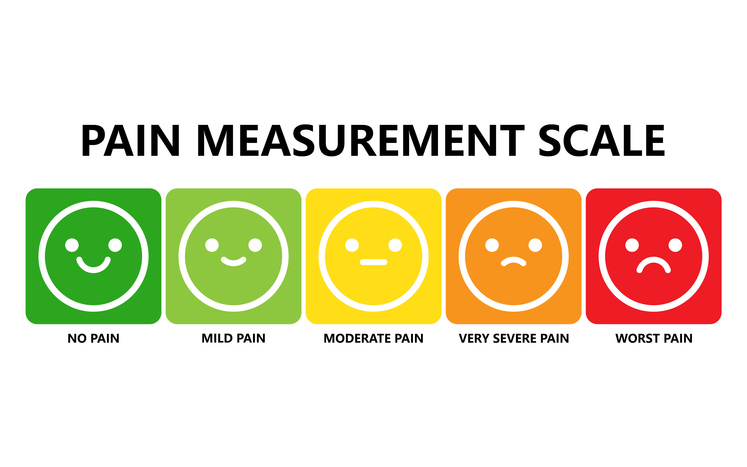Pain
Mankoski Pain Scale

The Mankoski Pain Scale is a numerical scale ranging from zero to 10: zero indicates no pain and 10 represents pain so severe that an individual loses consciousness. Like other pain scales, the Mankoski scale is a tool that individuals with chronic pain can use to systematically track their pain. It helps clinicians better understand an individual’s pain intensity, helping to ensure their pain is adequately addressed and managed.
Who developed the Mankoski Pain Scale?
Andrea Mankoski, an individual with a chronic pain condition, developed the Mankoski Pain Scale. As pain is a highly subjective experience, Mankoski developed this scale to describe her pain in concrete terms to her family and health care providers. Each level of pain has a brief description to categorize pain severity and a brief explanation of pain medication needs and effectiveness for that specific level.
Benefits of descriptive pain scales
Descriptive pain scales can help both clinicians and individuals with pain understand the intended meaning behind each level of pain. They allow for more consistent and congruent interpretations of pain intensity when compared with visual pain scales. A study of 200 veterans with chronic pain, published by the American Society for Pain Management Nursing in 2014, found that most (46%) preferred the Mankoski Pain Scale more than three other pain scales (the Visual Analog Scale, the Numeric Rating Scale, and the FACES Scale) because it uses phrases to describe the differences among incremental pain levels.
Mankoski Pain Scale ratings and descriptions
The Mankoski Pain Scale ratings and descriptions are as follows:
- 0 – Pain free
- 1 – Very minor annoyance – occasional minor twinges. No medication needed.
- 2 – Minor annoyance – occasional strong twinges. No medication needed.
- 3 – Annoying enough to be distracting. Mild painkillers are effective (aspirin, ibuprofen)
- 4 – Can be ignored if you are really involved in your work, but still distracting. Mild painkillers relieve pain for 3-4 hours.
- 5 – Can't be ignored for more than 30 minutes. Mild painkillers reduce pain for 3-4 hours.
- 6 – Can't be ignored for any length of time, but you can still go to work and participate in social activities. Stronger painkillers (codeine, acetaminophen-hydrocodone) reduce pain for 3-4 hours.
- 7 – Makes it difficult to concentrate, interferes with sleep. You can still function with effort. Stronger painkillers are only partially effective. Strongest painkillers relieve pain (extended-release form of oxycodone, morphine)
- 8 – Physical activity severely limited. You can read and converse with effort. Nausea and dizziness set in as factors of pain. Strongest painkillers reduce pain for 3-4 hours.
- 9 – Unable to speak. Crying out or moaning uncontrollably – near delirium. Strongest painkillers are only partially effective.
- 10 – Unconscious. Pain makes you pass out. Strongest painkillers are only partially effective.


















